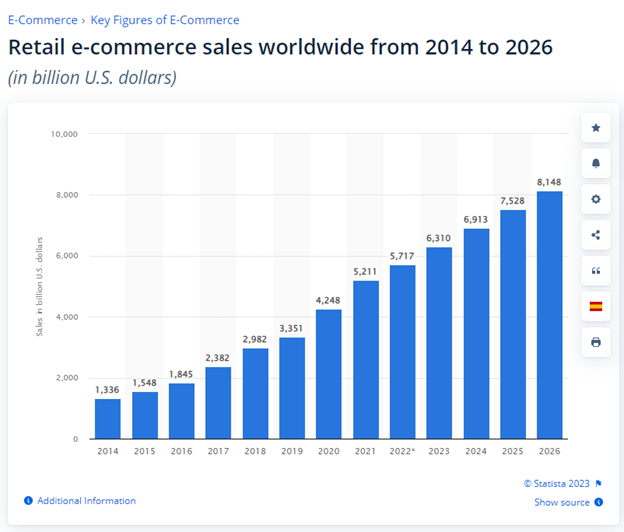Working in the fashion industry isn’t just interesting because of Lady Gaga’s infamous meat dress. Its interesting because it holds a lot of history.
Throughout history, fashion or clothing was initially intended for warmth and protection but has evolved into a powerful means for individuals to express their identity. Today, it has become one of the most effective ways for people to showcase their true selves. Now, we won’t go into the history of the everchanging fashion industry but we will talk about the phenomenon that has revolutionized the world of fashion: Fashion eCommerce.
It’s no surprise that eCommerce, online selling or whatever you want to call it, has disrupted the fashion industry to some extent.
From fast fashion to luxury items, consumers are able to get their hands on whatever they want within a matter of weeks. Whether you sell wholesale and/or retail, the health of your fashion eCommerce and sales channels should be at the forefront of any fashion business owners mind.
The fashion eCommerce industry is so saturated, businesses selling online must have a strong business plan, seamless integration and well, a robust backend system to manage the inventory, customers, sales, and more.
Retail eCommerce Sales
In 2023, the global apparel/fashion market is estimated to generate $1.7 trillion.
Worldwide retail eCommerce sales are expected to reach just over eight trillion dollars in 2026, with no signs of slowing down.
Although these numbers are good, US retailers and marketers are even better at utilizing the internet for driving fashion sales and have been consistently providing more sophisticated online offerings. These include components that allow consumers to compare prices, follow style trends, view new collections, and read customer ratings and reviews.
In addition, mobile eCommerce is on the rise giving consumers the ability to shop anywhere, and everywhere.
Having an eCommerce site is very important to those in the fashion industry as Nielsen reports that apparel is one of the most popular categories of items purchased over the internet.
Fashion eCommerce: Getting Started
If you already have inventory and just want to start selling online as part of your sales cycle, it's simple as long as you have the right software in place. ERP software or Enterprise Resource Planning Software is an all-in-one solution that can manage your inventory, accounting and integrate with your eCommerce store. When you sell products through multiple selling channels, its important to have a system that can manage and track these channels. For example, let's say you have to put a line of pants on sale but each color is discounted differently. If you had to manually enter the sales discount on each sales platform, you can run into errors. On the contrary, if you have a ERP system used as the source of truth, you enter the discounts once, and the price is automatically reflected along all the sales channels.
Fashion eCommerce Cost Considerations
- Interface and architecture costs
- Financial transaction costs – Do you want to accept credit cards transactions? If so, you’ll have to understand the challenges of credit card processing so you don’t run into any issues.
- Hosting and Security costs – Your data needs to live on a server somewhere
- Marketing Costs – You’ll want to promote your website!
- CRM costs - If you’re using something more robust than what your ERP offers
- ERP software cost
Benefits to eCommerce Integration
- Inventory levels are updated automatically on the front-end and back-end
- Providing order tracking
- Promotional discounts are simple to manage
Blue Link is a unique environment in terms of you have to be ready to embrace it, but if you’re willing to really make that effort from a company standpoint and you really get your staff on board, it’s pretty phenomenal.
– Tal Dehtiar, Owner, Oliberté











